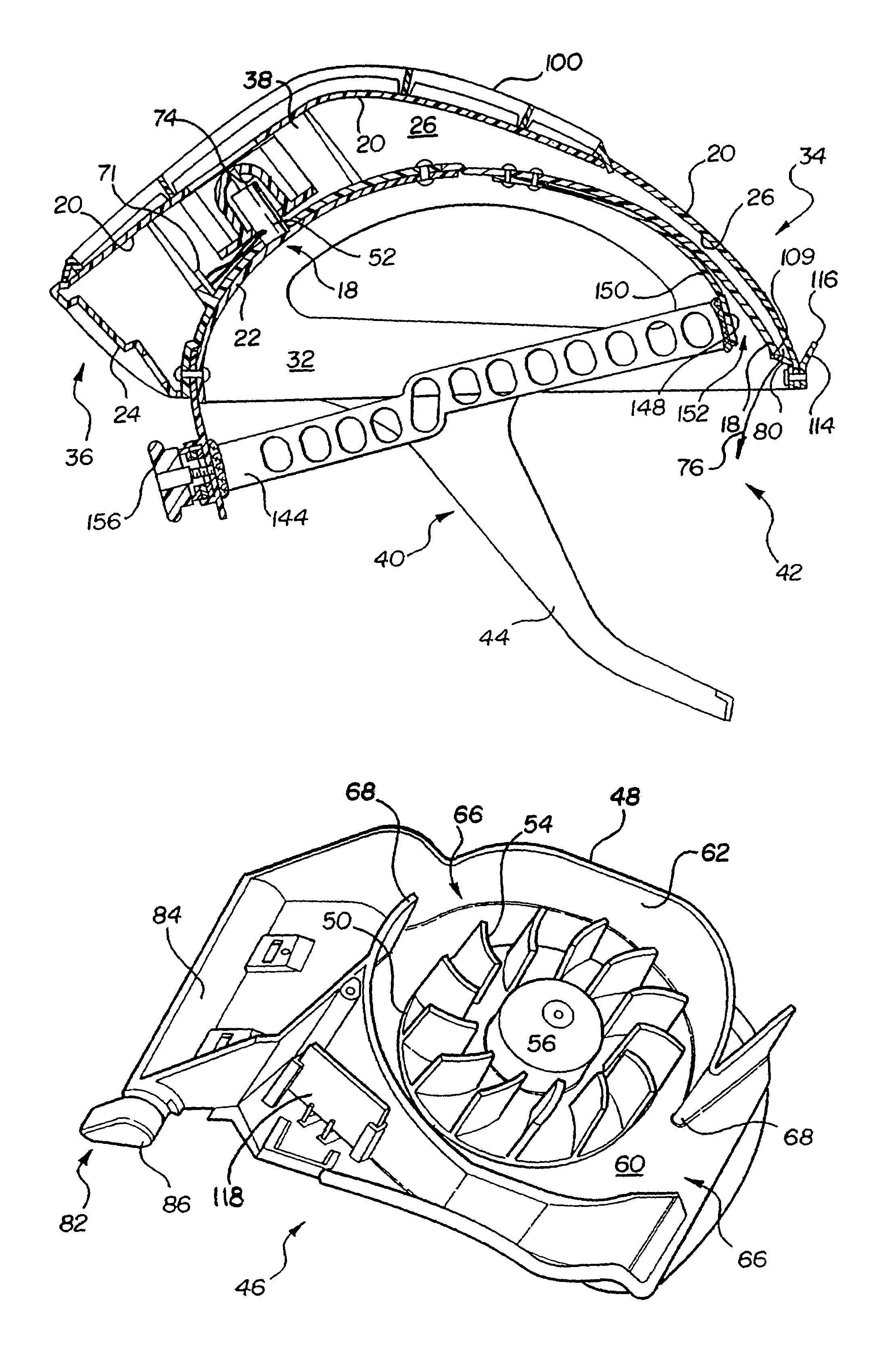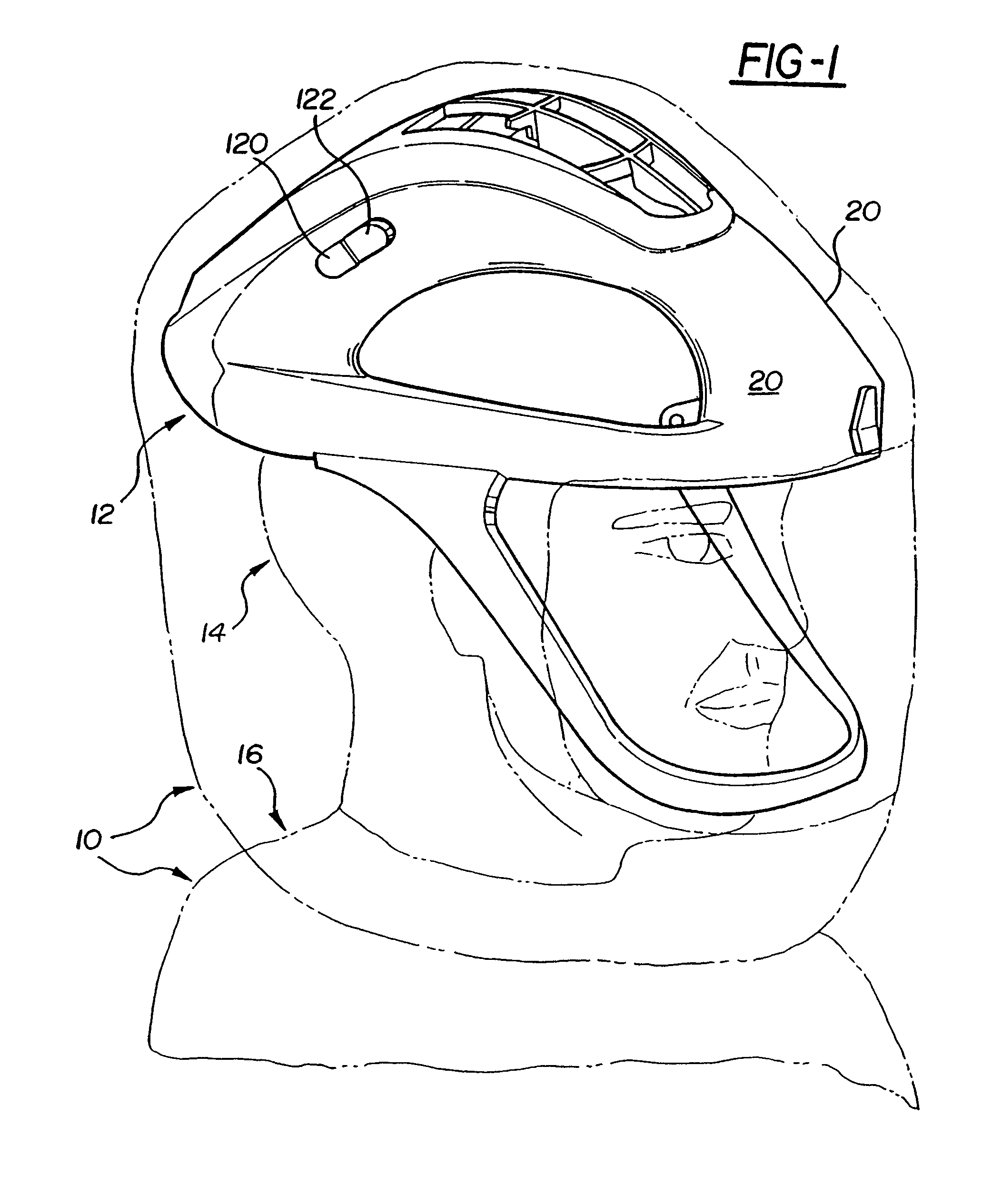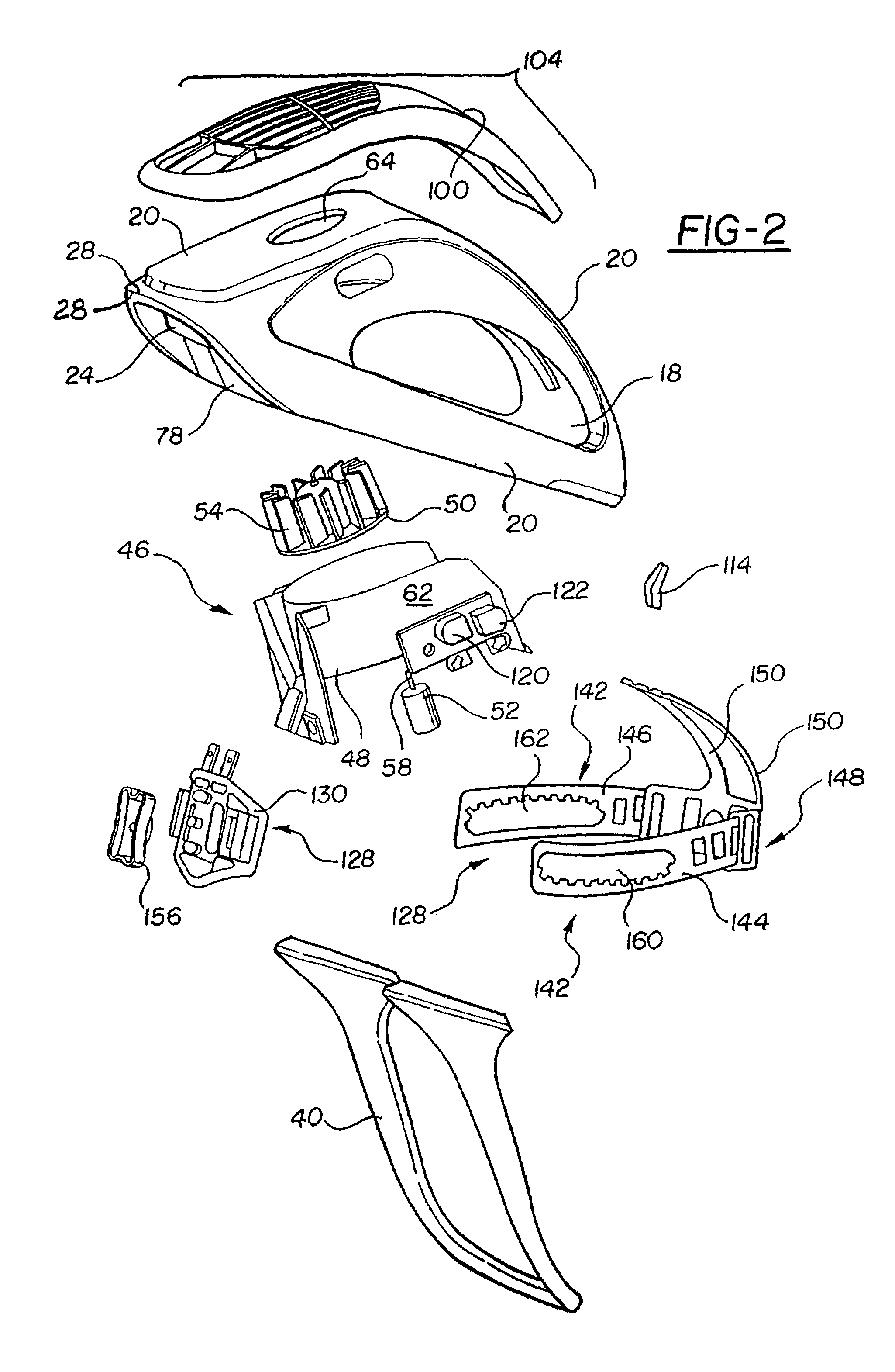Air filtration system including a helmet assembly
a technology of which is applied in the direction of hats, breathing protection, protective garments, etc., can solve the problems of deficient air filtration system and helmet assembly of this patent, deficient in air distribution that is not completely distributed, and deficient in intake grid, so as to maximize the effective intake area and minimize the effect of strain and fatigue in the user
- Summary
- Abstract
- Description
- Claims
- Application Information
AI Technical Summary
Benefits of technology
Problems solved by technology
Method used
Image
Examples
Embodiment Construction
[0038]Referring to the Figures, wherein like numerals indicate like or corresponding parts throughout the several views, an air filtration system and helmet assembly are generally disclosed at 10 and 12, respectively. Referring to FIG. 1, the air filtration system 10 filters air between a head 14 and body 16 of a user and an environment external to the user and includes the helmet assembly 12 mounted to the head 14 of a user. The helmet assembly 12 distributes air about the head 14 of the user as will be described below. More specifically, the helmet assembly 12 distributes air toward both a front of the head 14, i.e., the face, of the user, and a back of the head 14, i.e., the neck, of the user.
[0039]Referring now to FIGS. 2 and 3, the helmet assembly 12 includes an inner structural shell 18 and an outer structural shell 20. The inner shell 18 includes a cover surface 22 and a rear facing 24 which extend to the outer shell 20. The cover surface 22 and rear facing 24 will be discuss...
PUM
 Login to View More
Login to View More Abstract
Description
Claims
Application Information
 Login to View More
Login to View More - R&D
- Intellectual Property
- Life Sciences
- Materials
- Tech Scout
- Unparalleled Data Quality
- Higher Quality Content
- 60% Fewer Hallucinations
Browse by: Latest US Patents, China's latest patents, Technical Efficacy Thesaurus, Application Domain, Technology Topic, Popular Technical Reports.
© 2025 PatSnap. All rights reserved.Legal|Privacy policy|Modern Slavery Act Transparency Statement|Sitemap|About US| Contact US: help@patsnap.com



